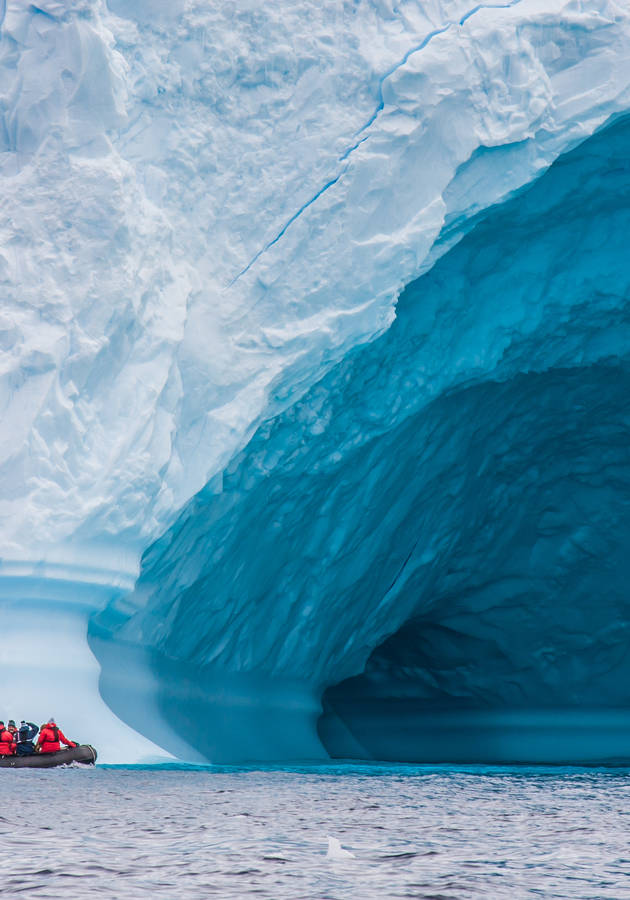First discovered by a Russian expedition in 1820, the continent of Antarctica became an object of fascination for numerous explorers around the world during the first two decades of the 20th century. To history buffs and readers of exploration literature, this period is primarily known as the Heroic Age of Antarctic Exploration.
Set during this age, Alfred Lansing’s classic, “Endurance,” is not about the period’s most famous protagonists such as Roald Amundsen or Robert Falcon Scott – but about one of Scott’s officers, Sir Ernest Henry Shackleton. Also, it’s not about reaching the South Pole, but about something even more daunting: crossing the entire inhospitable continent from sea to sea.
So, get ready for a frighteningly freezing adventure and join us as we follow Shackleton on one of the most incredible voyages in history.
The audacious plan of Sir Ernest Henry Shackleton
When Norwegian explorer Roald Amundsen reached the Farthest South latitude on December 15, 1911 – about a month before a British expedition led by renowned explorer Robert Falcon Scott achieved the same – the United Kingdom didn’t take the news lightly. The country’s record for exploration “had been perhaps unparalleled among the nations of the Earth,” and now they had to take “a humiliating second-best” to a much less-renowned country. To make matters worse, soon after, England was saddened with the news that Scott died while attempting to journey back. The country had lost everything in just a few weeks: its naval prestige, its hero, and its objectives.
Sir Ernest Henry Shackleton, one of Scott’s former captains, was just too restless and resolute to admit defeat or to accept that the Age of Exploration was effectively over. So, as soon as the tragic news reached his ears, he turned his attention to the “one great object of Antarctic journeyings” remaining: a transatlantic voyage. He wanted to become the first person to cross Antarctica from one side to the other, that is to say, from the Wendell Sea via Vahsel Bay and the South Pole to McMurdo Sound. It was not just a matter of personal achievement at this point – it was a matter of national pride.
“From the sentimental point of view,” Shackleton wrote once while soliciting funds for his expedition, “it is the last great polar journey that can be made. It will be a greater journey than the journey to the Pole and back, and I feel it is up to the British nation to accomplish this, for we have been beaten at the conquest of the North Pole and beaten at the first conquest of the South Pole. There now remains the largest and most striking of all journeys – the crossing of the continent.”
Of course, not everybody was impressed: in some circles, Shackleton’s planned undertaking – a several-thousand-mile journey through extreme conditions – was criticized not only for being too “daring,” but also for being practically “impossible.” Perhaps it had been both. But, as Lansing writes, “if it hadn’t been audacious, it wouldn’t have been to Shackleton’s liking. He was, above all, an explorer in the classic mold – utterly self-reliant, romantic, and just a little swashbuckling… Whatever his mood – whether it was gay and breezy, or dark with rage – he had one pervading characteristic: he was purposeful.”
October 1914 – January 1915: the trapping of Endurance
Ernest Shackleton’s 28-men expedition set sail on October 26, 1914, from Buenos Aires, Argentina. Nine days later, the ship (both prophetically and ironically named Endurance) reached the first stop of the journey: the Grytviken whaling station on the island of South Georgia. Whalers there reported something portentous: the conditions in the Weddell Sea were the worst they could remember in quite some time.
Shackleton barely even considered this. A month later, on December 5, 1914, the Endurance left South Georgia. Unfortunately, just two days later, it encountered the first ice pack on its journey. Somehow, they managed to sail through it after about two weeks. The fact they drifted about 60 nautical miles (112 km) from their intended target didn’t matter much: it was bearable and manageable.
But, very soon – in the middle of January 1915, to be exact – they happened upon another ice pack, some 200 miles (322 km) from Vahsel Bay. This one they couldn’t get through: their ship got stuck immobile inside and the crew had no choice but to allow being drifted away with the pack ice for the next several months. Eventually, they lost sight of land completely: due to the Weddell Sea current, they started circling back to South Georgia, and they were further and further away not only from their target but also from any port whatsoever.
January 1915 – October 1915: the sinking of Endurance
To make matters worse, the Antarctic summer (which coincides with winter in the Northern Hemisphere) soon ended, and the endless polar nights began. “In all the world there is no desolation more complete than the polar night,” writes Lansing. “It is a return to the Ice Age – no warmth, no life, no movement. Only those who have experienced it can fully appreciate what it means to be without the sun day after day and week after week. Few men unaccustomed to it can fight off its effects all together, and it has driven some men mad.”
To stop this from happening and neutralize the depression as much as possible, Shackleton organized Sunday evening gramophone concerts and monthly lectures by the photographers at the Endurance – to name only a few of the several seemingly jolly events that aimed to help the sailors keep their spirits up.
By late October 1915, still frozen immobile in the enormous ice pack, the Endurance had drifted over 500 nautical miles (926 km) to the northeast. Moreover, the ice had thickened in the meantime, and the Endurance had to endure much more pressure from the surrounding pack. On October 27, 1915, it finally succumbed to it: the ice started crushing the boat.
October 1916 – March 1916: living on an ice pack
Instantly aware of the extent of this new misfortune, Shackleton had no choice but to order his crew to leave the Endurance straight away and start building a camp on a nearby floe of ice, while salvaging as much material and food from the ship as possible. And during the next month or so, everything that could be saved was stockpiled on a floe. On November 21, 1915, the Endurance entirely sank beneath the sea.
Since the floe at which Shackleton’s crew had initially set a camp had also crumbled under pressure in the meantime, the crew had to relocate. Hoping that a new ice floe would drift them to safety, on December 29, Shackleton set a new camp on another ice pack, and dubbed it “The Patience Camp.”
The Patience Camp would be the crew’s home for the first third of 1916. While there, they would make a few attempts to sled over the ice, but all of them would prove to be unsuccessful. It is only due to Shackleton’s ability to motivate his people that his crew hadn’t given up altogether at this point. They ate penguins and seals, occasionally killing dogs as well, to conserve as much food as possible.
March 1916 – April 1916: voyage to Elephant Island
In March 1916, the ice floe where the Patience Camp was located successfully made its way to about 60 miles (96.5 km) from Paulet Island, but impassable conditions made floating to the island all but a possible goal.
Soon after, to the dismay of the crew, the ice floe began to break, and Shackleton had to plan a trip to some kind of a nearby land – using nothing more than three lifeboats. On April 9, 1916, the unthinkable happened and the ice pack broke in two. The three lifeboats – named James Caird, Stancomb Wills, and Dudley Docker – were launched for a voyage to Elephant Island, a remote and uninhabited place far from all shipping lanes. They were the only remaining hope for the desperate crew.
After six miserable days, the three lifeboats landed on Elephant Island on April 15 – the first time that the 28 men on them touched dry land after precisely 497 days! Though remote and uninhabited, Elephant Island was much more reliable than a lifeboat or an ice floe, so the crew was happy and relieved. Shackleton was not: he knew that this was merely the beginning of the rescue journey.
April 1916 – May 1916: reaching the Stromness Whaling Station
Barely nine days after setting up a camp at Elephant Island, Shackleton selected the five strongest men in his crew – captain Frank Worsley, second officer Tom Crean, carpenter Chippy McNeish, and seamen Tim McCarthy and John Vincent – and the best boat (the James Caird) and set off with them for South Georgia in hope of finding some help at the whaling station.
The extremely dangerous journey lasted for two weeks. Finally, on May 10, the James Caird reached the south coast of South Georgia. Unfortunately, it was on the wrong side of the island. So, merely a few days after reaching it, the exhausted Shackleton, Crean, and Worsley – facing the fact that the James Caird is now too unseaworthy to use it to go round the island – set out on yet another dangerous and never-before-done journey - to reach the Stromness whaling station and cross the uninviting South Georgia island on foot! A while later, the first sign of hope appeared: the three men are roused to hear the sound of a factory whistle.
“A peculiar thing to stir a man,” writes Lansing, “the sound of a factory whistle heard on a mountainside. But for them, it was the first sound from the outside world that they had heard since December 1914 – 17 unbelievable months before. In that instant, they felt an overwhelming sense of pride and accomplishment. Though they had failed dismally even to come close to the expedition’s original objective, they knew now that somehow they had done much, much more than ever they set out to do.”
Finally, the men reached the Stromness whaling station, and Worsley immediately sailed back to pick up the three men left behind.
May 1916 – August 1916: rescuing the 22 men left behind
The mission was not complete, though: 22 men were still on Elephant Island all waiting to be saved.
During May and June, using borrowed ships – Southern Sky, Instituto de Pesca 1, and Emma – Shackleton embarked on a series of unsuccessful rescue attempts to reach Elephant Island, where the other men of his crew had, in the meantime, not given up on hope.
Finally, on August 30, 1916, during his fourth rescue attempt aboard the steam tug Yelcho (loaned to him by the Chilean government), Shackleton reached Elephant Island and rescued all 22 remaining members of his original expedition, two years and 22 days since leaving England. On September 3, 1916, the Yelcho reached Punta Arenas, with all 28 members of the Imperial Trans-Antarctic Expedition aboard.
About five years later, Shackleton died of a heart attack while his ship was moored in South Georgia, the place of his most famous exploit. He was 47 years old at the time. Though lauded in the press upon his death, his name would largely be forgotten since then, his reputation overshadowed by that of his far more celebrated compatriot and one-time captain, Robert Falcon Scott.
However, thanks to Lansing’s account, Shackleton was rediscovered in the second half of the 20th century. Today, his exceptional ability to keep his team together in desperate circumstances is not just a part of an early-20th-century survival story, but a timeless lesson in selflessness and proper governance. Perhaps it should be part of all dictionaries. Term: leader. Definition: someone who’s got your back through hell and all. Example: Ernest Henry Shackleton, Officer of the Order of the British Empire.
Final Notes
There’s a reason why people remember Alfred Lansing for this book, and why they remember Shackleton’s failed expedition primarily through it: “Endurance” is not only an exceptionally researched, but also beautifully written book.
And by beautifully written, we mean written in a way they don’t write books anymore: Lansing’s prose belongs more to the 19th century than to the modern age, but that should be off-putting only to those who, unlike the protagonist of the book, are not persistent and tenacious enough to swim through the meandering syntax and the several layers of meaning to reach the surface - feeling pleasure, breathless and richer for a rewarding experience.
A classic of exploration literature, “Endurance” is a story of heroic failure. And since heroic failure touches us even more than heroic success, it’s bound to remain engraved in our memories – for as long as men read and write books.
12min Tip
“If you’re going through hell,” advised once Winston Churchill, “keep going.” That’s the main takeaway from Shackleton’s incredible journey.





























